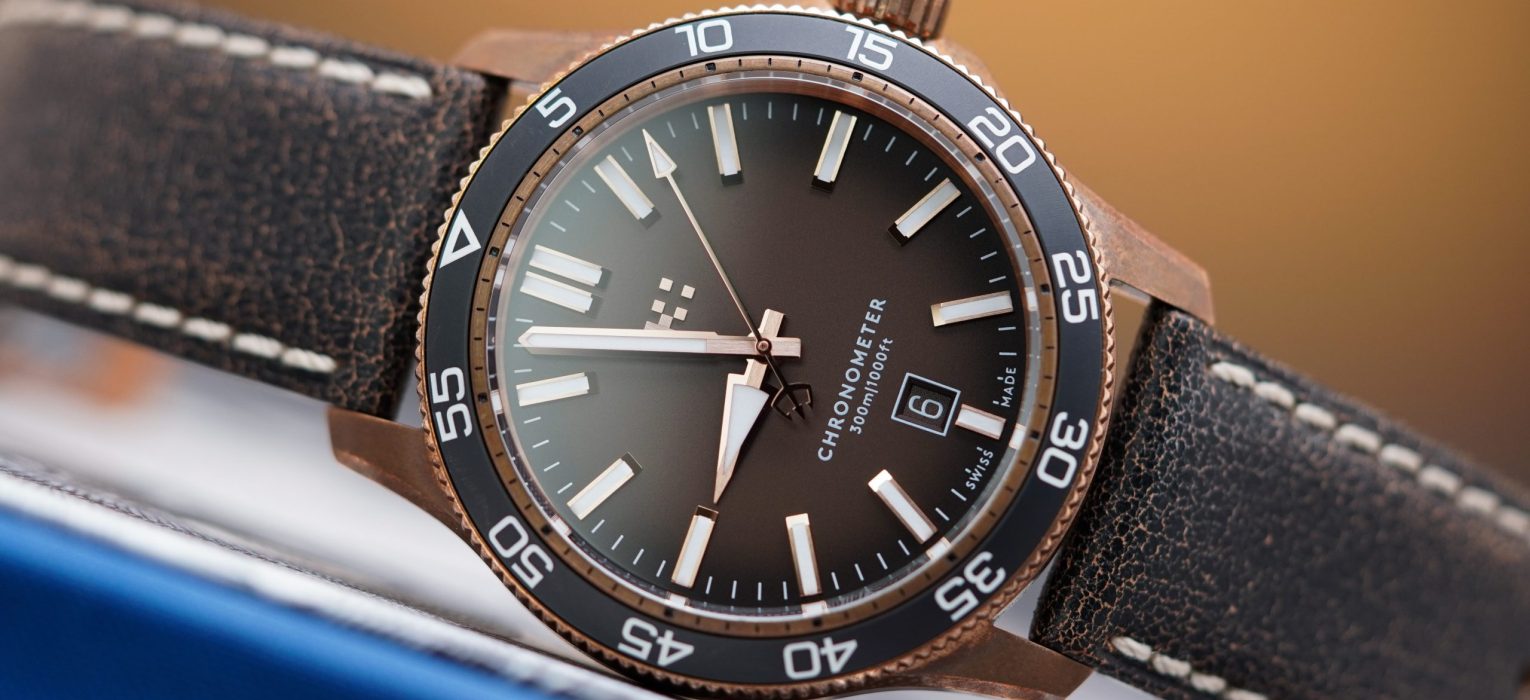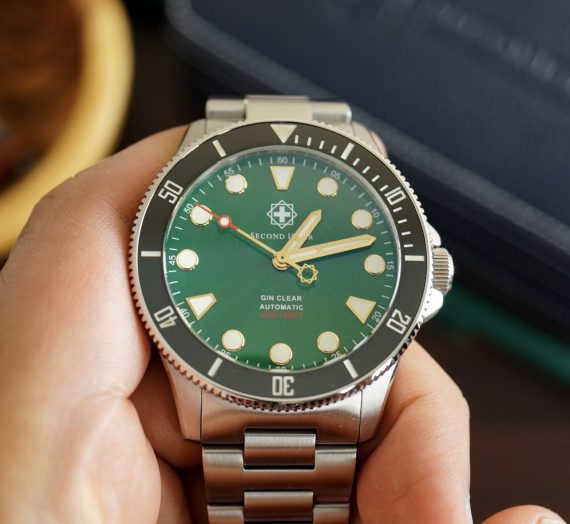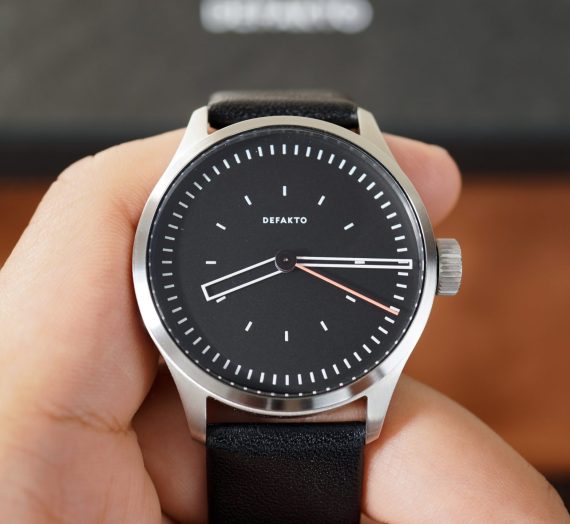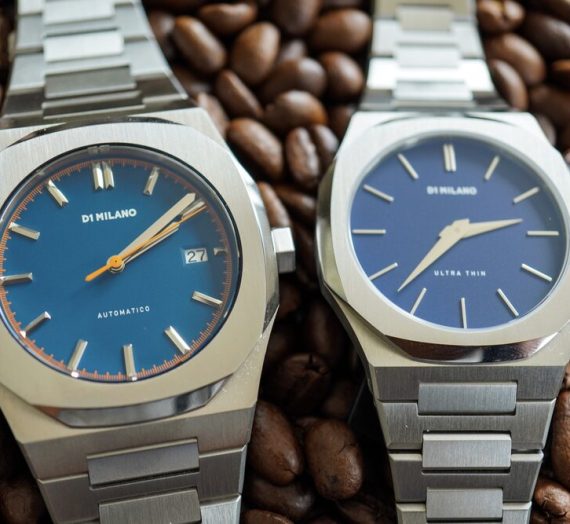Disclaimer: this video/review was not sponsored by Christopher Ward or any other entity.
Video
Review
If you’ve been following my content for a while, you’re likely familiar with the accolades I’ve heaped on Christopher Ward over the years. Over the last few years, this brand has taken significant strides, revamping their catalog with some truly impressive designs and engineering feats. Known for blending Swiss manufacturing precision with distinctive British design, Christopher Ward lives up to their promise in offering exceptional value. Their commitment to transparency continues to be a cornerstone of their success, more so today than ever before.
While the Bel Canto may have recently stolen the spotlight with its success, Christopher Ward remains true to its roots, consistently delivering remarkable and capable sports watches, such as the newly introduced C65 Super Compressor Elite. Today, we turn our attention to another standout series in their lineup – the C60 Bronze. Specifically, I’ll be diving into the details of the C60 Bronze with a Brown Ombré/Black dial (now also available in a Blue Ombré dial configuration). Priced at $1300 on a leather strap and slightly less at $1290 on rubber, this watch promises to merge affordability with the luxury and reliability Christopher Ward is celebrated for.
Let’s check it out!
Case
The C60 Bronze showcases a robust and aesthetically pleasing case design that measures 41.7mm in diameter across the 4 o’clock to 10 o’clock positions (41.2mm across the bezel only), extending 48.5mm from lug tip to lug tip, with a comfortable height of 11.75mm and a 22mm lug width. Crafted from CuSn6 Bronze, a durable alloy known for its high corrosion resistance and excellent mechanical properties, this watch is built to endure but also built to evolve over time.

The Light Catcher case design is beautifully executed with brushed and polished surfaces, however on this particular review unit, the polished surfaces are slightly harder to differentiate given the patina that has built up on the case over its lifetime traveling the world and being abused by watch reviewers.

Despite this, the case retains its remarkable design appeal. The design elements like the gracefully curving lugs and the beautifully chamfered edges highlight the Light Catcher design, making the C60 one of my favorite expressions of this design style guide. The crown guard is another highlight, seamlessly transitioning the mi-case to form a sharp and ergonomic protector for the 6.4mm screw-down bronze crown, which is detailed with Christopher Ward’s twin flag logo and is very easy to operate.

The bronze unidirectional dive bezel, featuring a 120-click mechanism, performs flawlessly in terms of action and alignment, topped with a matte ceramic insert that includes lumed numerals and a triangle. Surprisingly, the ceramic bezel on this unit has some scratches, hinting at the rigorous conditions it has faced at the hands of my barbaric watch reviewing brethren.

The watch also features a flat sapphire crystal with superior anti-reflective coating, ensuring clarity. Flipping the watch over reveals a stainless steel exhibition case-back screwed into the bronze mid-case, offering a view of the Sellita SW200 movement. With a water resistance rating of 300m, this watch combines durability with excellent design with a material that is more organic and life-like compared to steel or titanium.
Dial
Over the years, I have photographed more than a dozen Christopher Ward watches, and I’ve consistently been impressed by their meticulous attention to dial quality and detail, which holds up even under (unnecessary) scrutiny with a loupe or macro lens. The C60 Bronze is another example to this ongoing commitment. Previously available only in this Brown-Ombré-Black variant, Christopher Ward recently added a Blue-Ombré-Black option which is equally impressive. These dials feature a dynamic fumé style gradient achieved through a high-speed paint spinning process, enriched with layers of lacquer for enhanced depth and a radiant finish.

The minute track aligns perfectly with the hour markers, featuring large, legible white ticks printed with great precision and clarity. The 5N gold hour indices are applied and filled with lume, boasting a level of diamond polished finishing rare in this price range.


The brand’s twin flag logo, applied below the 12 o’clock index in brushed 5N gold, requires five separate attachment points for its components, showcasing an impressive complexity in the dial’s construction. Additionally, the date window is thoughtfully positioned above the 6 o’clock mark, bordered in white with a dial color matching date wheel that integrates seamlessly into the overall design aesthetic, while also integrating a shortened version of the hour index below it. The text printed above the date window highlights the watch’s Chronometer certification, hinting at the COSC-certified Sellita SW200 movement within.


The handset, matching the indices in a multi-faceted and multi-finished brushed and polished 5N gold and filled with lume, reflects the same high standard of finishing. The hands are very legible, play with light wonderfully and the trident counter balance of the seconds hand is something I’ve grown to enjoy seeing on these Trident models.


Overall, the C60 Bronze is another data point for me to comfortably declare that Christopher Watch does some of the best dials in this price category when it comes to finishing and attention to detail and quality control.
Lume
The C60 Bronze excels in its lume design and performance, quickly earning its spot among my favorite lumed watches. The way to my lume junkie heart is with a fully lumed ceramic bezel insert, and this watch does that with numerals that are generously filled with high-quality Super-LumiNova® Grade X1 BL C1, a material known for its superior brightness and longevity. The hour, minute, and second hands are equally equipped with ample amounts of this luminescent material, ensuring excellent legibility in low light conditions.

In terms of endurance, the lume on this watch stands out, shining bright and maintaining its glow throughout the night. To gauge its performance against a few other divers I had at the time, I conducted a 20-minute time-lapse comparison involving the Tudor Black Bay Monochrome, Synchron Poseidon Ice Diver, Certina DS Super PH1000M, Seiko Samurai SRPL13, and CWC Royal Navy 300. The results are clear – the Christopher Ward C60 Bronze is among the top performers, shining brightly and for longer than most in the lineup. For anyone who appreciates robust lume on their watches, the C60 Bronze from Christopher Ward offers everything you could possibly ask for.

Movement
I’ll echo my thoughts (word for word) from my review of the Archimede Outdoor Protect 39 which is one among many watches that uses the Sellita SW200-1. It is a well-regarded Swiss Made alternative to the hard-to-acquire ETA2824-2. Its reputation as a reliable performer is well-earned, with a track record that speaks to its durability and accuracy. Beyond its proven track record, the SW200-1 is notably user-friendly when it comes to servicing and repairs, and even its replacement costs are considered reasonable over the long term. In my personal experience, I’ve had numerous watches powered by this movement. While it’s true that some units might experience the windmilling rotor issue, this is easily (and also involves replacing a relatively low cost component) does not detract from the overall accuracy of these movements. They are, in many ways, the workhorses of the watch movement world, and it is a perfectly reasonable choice for a watch in this price range.

Christopher Ward goes a step further and uses the Chronometer variant of the Sellita SW200-1, which is the highest grade available and is guaranteed to an accuracy range of -4 spd to +6 spd, and is certified by Contrôle Officiel Suisse des Chronomètres (COSC). This particular unit was keeping time within those specs, which is quite impressive considering it has probably traveled the world a few times over and taken its fair share of beatings.
On The Wrist
The C60 Bronze offers an excellent fit for my 6.75″ wrist, with a 41.7mm diameter that balances well with its relatively compact 48.5mm lug-to-lug width. This dimension ensures that anyone with a wrist span exceeding this lug-to-lug measurement should find the watch quite comfortable to wear. Moreover, its impressive 11.75mm thickness, accentuated by the elegantly sculpted light catcher case design, contributes to its sleek profile, defying the bulkier appearance that the numbers might suggest.


This model comes with the option of either a rubber strap ($10 less than the leather option), or the aged leather strap that you see here, complete with a matching bronze buckle. The strap’s quality is very good; starting at a 22mm width at the lugs and tapering to about 20mm at the buckle, it provides not only a visually appealing look but also substantial stability on the wrist.
Overall, the Christopher Ward C60 Bronze wears remarkably well. Despite its dimensions that might hint at a larger presence, the watch feels refined and understated on the wrist, making it an excellent choice for those seeking a watch that combines presence with comfort.
Wrapping Up
The Christopher Ward C60 Bronze offers much to love: the bronze case and brown dial make a striking combination, and the light catcher case design stands out, even in bronze. The 42mm case size suits narrower wrists surprisingly well, and the lume performance is impressive, and the watch showcases meticulous attention to detail on the dial.
While the watch is mostly perfect, I would have preferred a Sellita SW300 over the chronometer-grade Sellita SW200 for its slimmer profile and better track record. Priced at $1300, the C60 Bronze is notably more expensive than the 42mm C60 Trident Pro 300 variant on a rubber strap ($910 vs $1290), primarily due to the bronze material and chronometer certification. While the premium is justified for the more exotic material and higher precision timekeeping, those looking for value might consider the steel variant a more cost-effective alternative.




